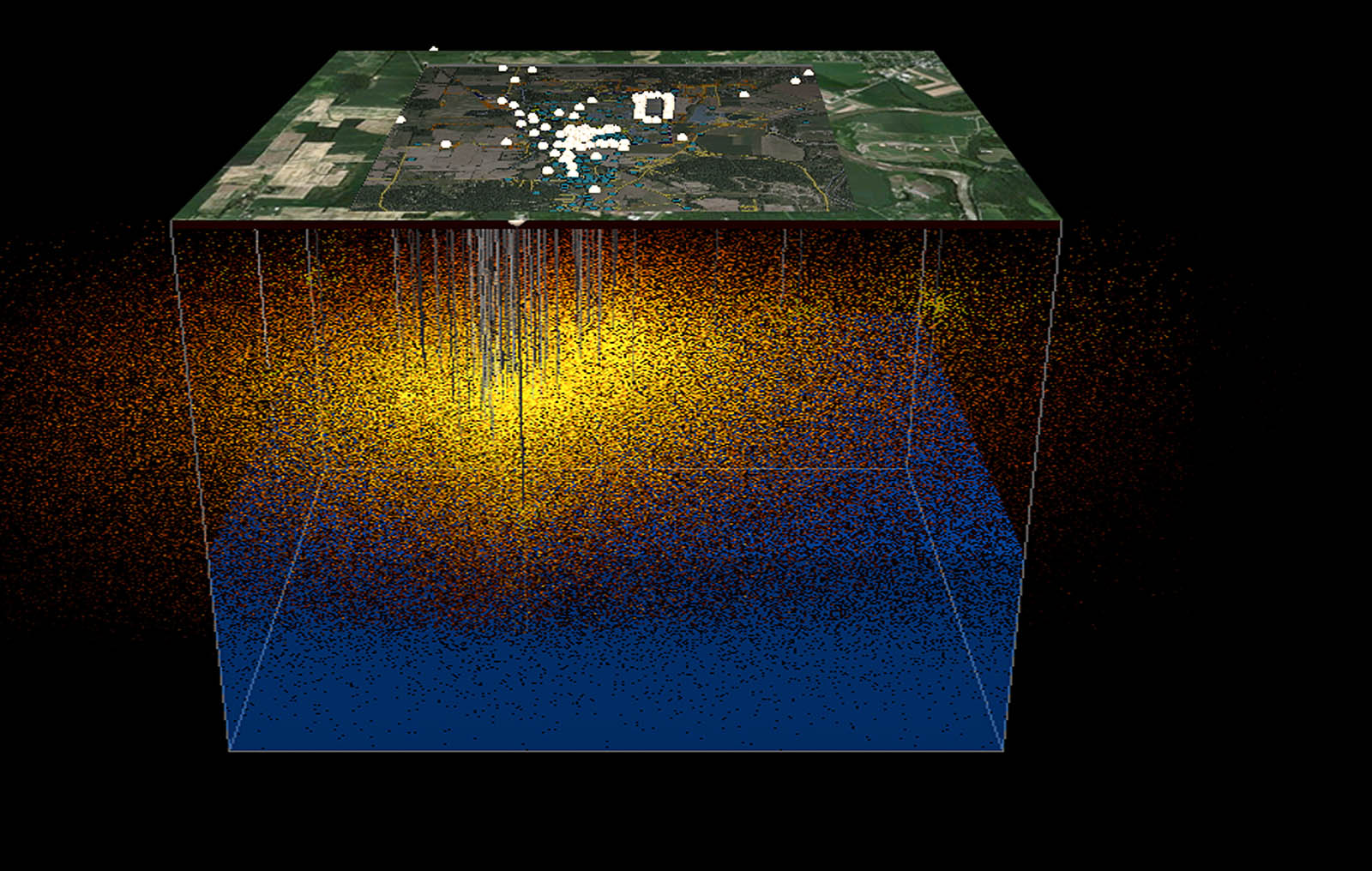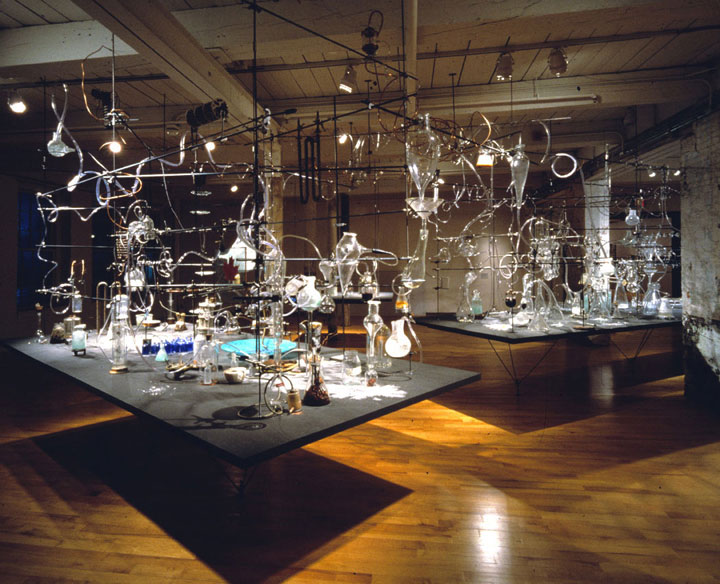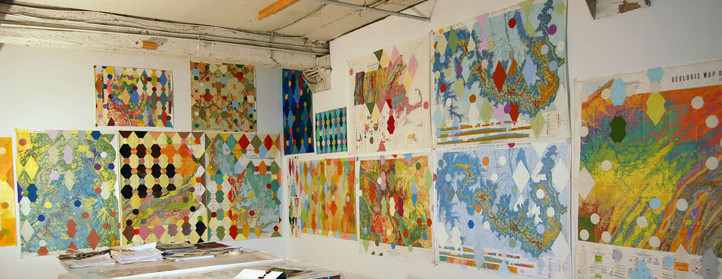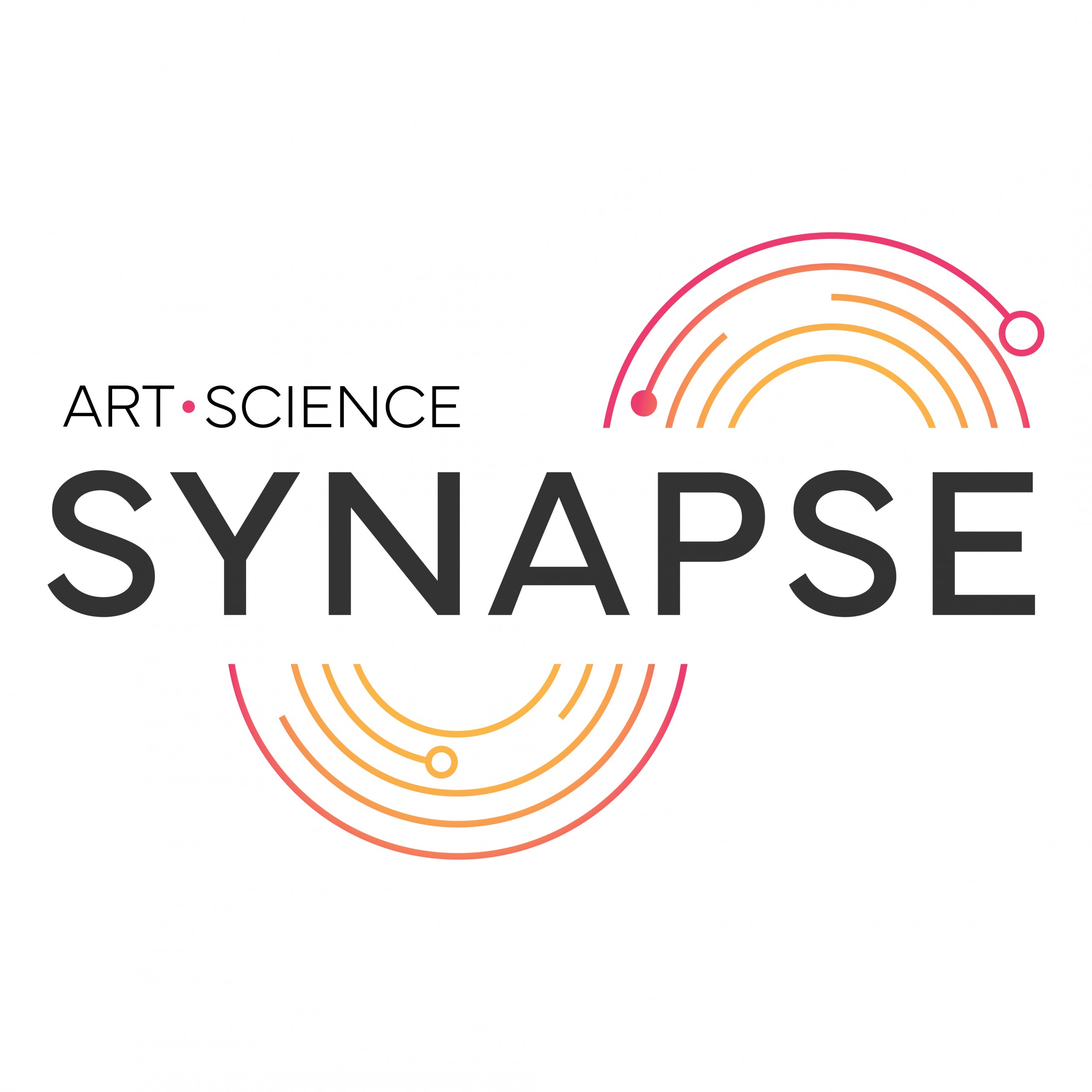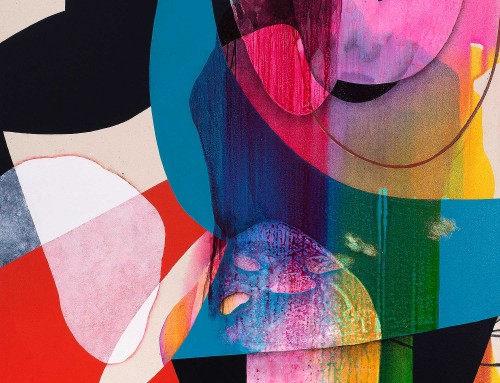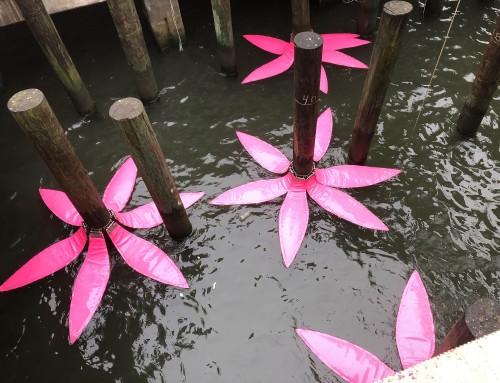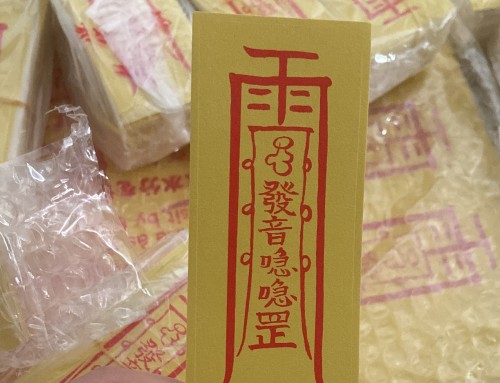In spring 2011, Artist Eve Andree Laramee visited for a week long residency. She lectured, met with students and collaborated on a mapping project with Tom Xiao, computer science and graduate student Kalyan Chakravarthy Thokala. The project involved making 3D visualizations of data mapping the contamination of the Ohio Aquafer located near Fernald Ohio. Fernald was a leading processing facility for Uranium.
FERNALD GREENWASH tells the story of the pollution of the Great Miami Aquifer with radioactive materials from the former Fernald Feed Plant, a uranium processing plant and foundry near Cincinnati, Ohio; and the sites transformation into the Fernald Ecological Park. The Department of Energy estimates that 1.2 million cubic meters of soil were contaminated soil and 237 million cubic meters of water were contaminated. Federal scientists affirm that no one will ever be able to live there, and that the site will have to be closely monitored essentially forever. The EPA states that “The area is unacceptable for housing. It is excellent for wildlife viewing.” Regarding the final resting place of the radioactive waste, some is located at the on-site disposal mound, morphologically reminiscent of the Mound Cultures of the Ohio Valley. The State of Nevada refused to take Fernald’s solid waste, some of it has been “dispositioned” to Utah.
INVISIBLE FIRE visualizes water in the Great Miami Aquifer beneath the former Fernald uranium processing plant and foundry near Cincinatti, Ohio, contaminated with radioactive isotopes of plutonium, uranium, radium, thorium and technitium. Using data from the Department of Energy GEMS database, test water samples from the Fernald area were mapped in a 3D computer program.
In her own words:
For thirty years, my interdisciplinary creative work has dealt with the mutable, triadic relationship between art, science and nature. My omnivorous curiosity draws me to research-based work that addresses the history of science, environmental ethics, natural phenomena, innovative sustainable practices and metafiction. Cultures use technology and art as devices to construct belief systems about the natural world, mediating zones between fact and fiction. I believe artists are agents of change in the evolution of consciousness. My practice involves environmental whistle blowing, inventive solutions to ecological problems: low-tech DIY sensibilites combined with beautiful high-tech tools of delivery. My formal sense of sculptural space involves dynamic interventions, installations and groupings of discrete objects that are frequently site-specific. This investigation into materials and imagery explores the associative and metaphorical qualities of the natural, social, historical, cultural and technological realms. Recent work addresses the environmental and biological impact of “Atomic Age” activities in the Western desert lands of the United States. It is my belief that the power and beauty of visual art can raise environmental awareness and instill ethical environmental values in future generations. This is where my professional practice as an artist, and my role as an art professor converge.
For more information, visit http://ohiowater.blogspot.com.
